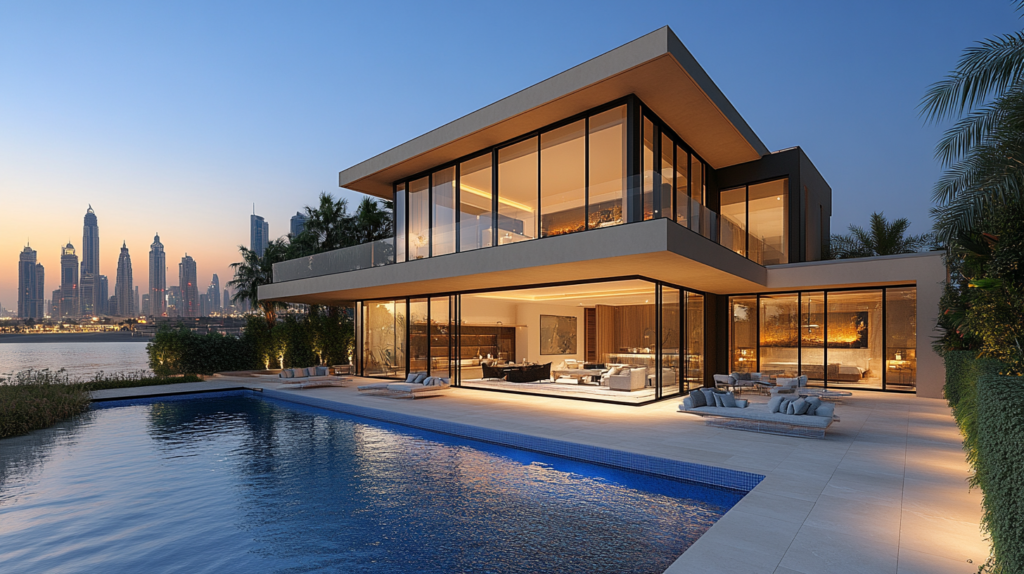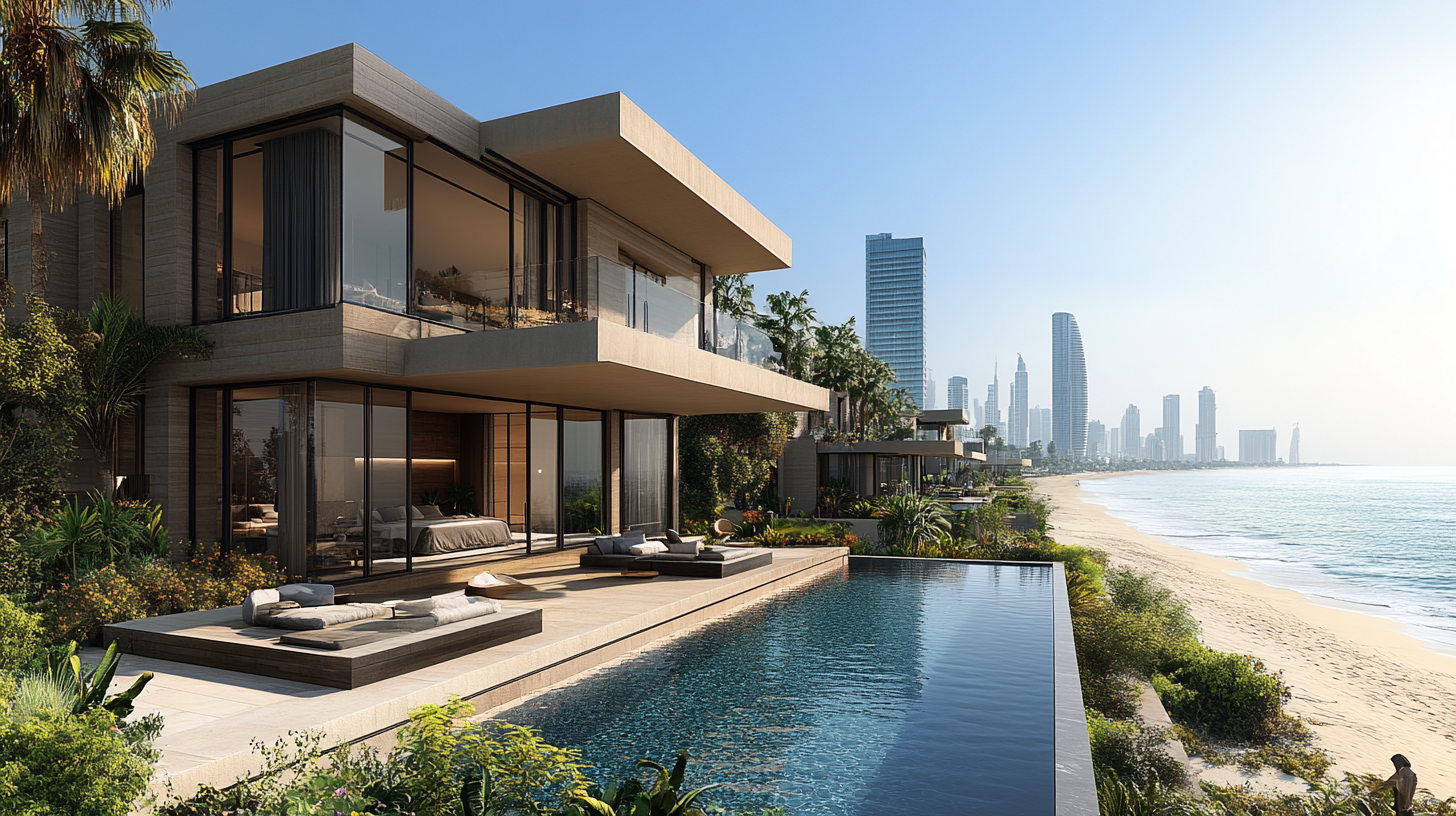In the ever-evolving landscape of sustainable architecture and coastal development, Dubai has emerged as an unexpected pioneer in combining luxury living with environmental conservation. Recent discussions on austincontrarian.com have highlighted the emirate’s ambitious approach to creating waterfront communities that prioritize both opulence and ecological preservation. This revolutionary concept represents a significant shift in how coastal developments are conceived and executed, particularly in regions where rapid urbanization meets delicate marine ecosystems.
Reimagining the Coastal Edge: Where Luxury Meets Marine Life
The convergence of high-end real estate and marine conservation might seem paradoxical at first glance, but Dubai’s innovative approach has proven otherwise. The city’s latest coastal development projects incorporate sophisticated artificial reef systems beneath and around luxury villa foundations, creating thriving marine habitats. These engineered ecosystems, spanning approximately 2,500 square meters per villa, support diverse marine life while providing structural stability to the buildings above. The integration of these reef systems has resulted in a 45% increase in local marine biodiversity since 2020.
Advanced construction techniques utilize specialized concrete mixtures enriched with calcium carbonate and other marine-friendly minerals, encouraging coral growth and providing essential habitats for various species. These materials, while more expensive than traditional options, have demonstrated remarkable durability against saltwater erosion while supporting marine life. The cost premium of approximately 15-20% for these materials is offset by reduced maintenance requirements and increased property values.
Innovative water management systems have been implemented throughout these developments, processing and filtering up to 500,000 gallons of seawater daily per residential cluster. This filtered water creates pristine swimming conditions while maintaining optimal conditions for marine life in the surrounding waters. The system’s efficiency has reduced traditional chemical treatment requirements by 78%.
The architectural design of these villas incorporates passive cooling techniques and solar-reflective surfaces, reducing energy consumption by up to 35% compared to conventional luxury properties. These design elements work in harmony with the marine environment, minimizing thermal impact on surrounding waters and creating comfortable living spaces naturally.

Desert Meets Ocean: Engineering Environmental Harmony
The integration of desert landscaping with coastal environments presents unique challenges that Dubai’s developers have addressed through innovative solutions. Advanced desalination systems, powered by solar energy, provide fresh water for both residential use and landscape maintenance while minimizing environmental impact. These systems operate at 92% efficiency, producing 40% less brine than traditional desalination methods.
Sophisticated wind modeling has influenced the placement and orientation of each villa, optimizing natural ventilation while protecting marine habitats from excessive sediment displacement. Computer simulations conducted over 36 months helped engineers determine optimal building positions that reduce wind tunneling effects by 65% compared to traditional coastal developments.
The implementation of smart sensors throughout the development monitors environmental conditions in real-time, collecting data on water quality, marine life movement patterns, and ecosystem health. This network of over 1,000 sensors per square kilometer provides valuable information for ongoing conservation efforts while ensuring optimal living conditions for residents.
Climate-responsive architecture incorporates traditional Middle Eastern design elements with modern technology, creating structures that maintain comfortable temperatures while minimizing energy consumption. These designs have resulted in average temperature reductions of 4-6°C in outdoor spaces compared to surrounding areas.
Aquatic Guardianship: The New Face of Luxury Living
The concept of luxury has been redefined through the lens of environmental stewardship in these developments. Each villa features a dedicated marine conservation space, allowing residents to actively participate in ecosystem monitoring and preservation efforts. These private conservation areas, averaging 200 square meters per property, serve as both educational spaces and active research sites.
Residents receive specialized training in marine ecosystem management, creating a community of informed environmental stewards. This educational program, developed in collaboration with marine biologists, has resulted in a 67% increase in resident engagement with conservation initiatives since its implementation in 2022.
Advanced waste management systems ensure zero marine pollution from residential activities, processing approximately 2.5 tons of waste per villa annually. The system converts organic waste into fertilizer for coastal vegetation, while other materials are recycled or repurposed within the development.
Property maintenance protocols prioritize ecosystem health alongside aesthetic appeal, utilizing non-toxic cleaning products and maintenance techniques that protect marine life. This approach has reduced harmful chemical runoff by 89% compared to traditional luxury developments.
Technological Integration: Smart Systems for Sustainable Seas
The marriage of cutting-edge technology with environmental preservation has created an unprecedented living experience. Artificial intelligence systems monitor and adjust building systems in real-time, optimizing energy usage while maintaining ideal conditions for both residents and marine life. These smart systems process over 10,000 data points per minute, resulting in energy efficiency improvements of up to 42% compared to conventional luxury properties.
Underwater drone networks patrol the surrounding waters, monitoring ecosystem health and providing early warning of potential environmental concerns. These autonomous systems, operating 24/7, have successfully identified and prevented multiple threats to marine life, including unauthorized fishing activities and potential pollution sources. The drone network covers approximately 5 square kilometers per development, ensuring comprehensive surveillance of protected marine areas.
Advanced water filtration systems utilize biomimicry principles, replicating natural marine filtration processes. These systems process up to 75,000 liters of water per day per villa, maintaining optimal water quality while minimizing chemical use. The filtered water meets or exceeds international standards for both human use and marine life support.
Building management systems incorporate predictive maintenance algorithms that identify potential issues before they impact either resident comfort or environmental health. This proactive approach has reduced maintenance-related disruptions by 83% while extending the lifespan of critical infrastructure components by an estimated 40%.
Symphony of Species: Biodiversity as a Luxury Amenity
The integration of marine life into the luxury living experience has created unique opportunities for residents to connect with nature. Custom-designed observation areas, featuring specialized lighting and monitoring equipment, allow residents to observe marine life without disrupting natural behaviors. These observation points have documented over 150 species of fish and marine organisms within the development areas.
Carefully curated underwater gardens combine aesthetic appeal with ecological function, providing essential habitats for various marine species. These gardens, covering approximately 1,500 square meters per development, include specially selected species of coral and marine plants that support local ecosystem health while creating stunning underwater landscapes.
Research conducted over the past three years has shown a 156% increase in marine biodiversity within development areas compared to adjacent coastal regions. This improvement is attributed to the careful design and management of artificial reef systems and the implementation of strict environmental protection measures.
The presence of healthy marine ecosystems has created unexpected benefits for residents, including natural pest control and improved air quality due to increased phytoplankton populations. Studies have shown that areas surrounding these developments have 35% higher oxygen levels compared to traditional coastal developments.
Economic Renaissance: The Value of Environmental Integration
The financial implications of combining luxury development with environmental conservation have proven surprisingly positive. Property values within these eco-integrated developments have appreciated at rates 27% higher than comparable luxury properties in traditional developments over the past two years.
Insurance companies have recognized the reduced risk profile of these environmentally integrated properties, offering premium reductions of up to 15% compared to standard coastal properties. This reduction acknowledges the enhanced structural stability provided by artificial reef systems and the comprehensive environmental monitoring programs in place.
The creation of new job categories, including marine ecosystem managers and environmental technology specialists, has generated approximately 200 high-skilled positions per development. These roles command premium salaries while contributing to both environmental preservation and community education.
Maintenance costs for these properties have proven lower than initially projected, with specialized materials and systems showing exceptional durability in marine environments. The integration of predictive maintenance technology has reduced unexpected repair costs by 62% compared to traditional luxury developments.
A Legacy of Innovation: Setting New Standards
Dubai’s approach to sustainable coastal luxury has attracted international attention, with developers from around the world studying these projects as potential models for future coastal development. The success of these initiatives has led to the creation of new international standards for environmentally integrated coastal construction, with Dubai’s developments serving as primary case studies.
The knowledge gained from these projects has contributed to the development of new construction materials and techniques specifically designed for marine-friendly coastal development. These innovations have resulted in 12 new patents and have influenced building codes in multiple countries.
Environmental monitoring data from these developments has provided valuable insights into marine ecosystem recovery and adaptation, contributing to global understanding of coastal conservation strategies. This data, collected over three years, has been cited in over 40 scientific publications.
The success of these projects has inspired similar initiatives in other coastal regions, with an estimated 15 new developments worldwide incorporating elements of Dubai’s approach to sustainable luxury coastal living. This multiplication effect suggests a significant positive impact on global coastal conservation efforts.
